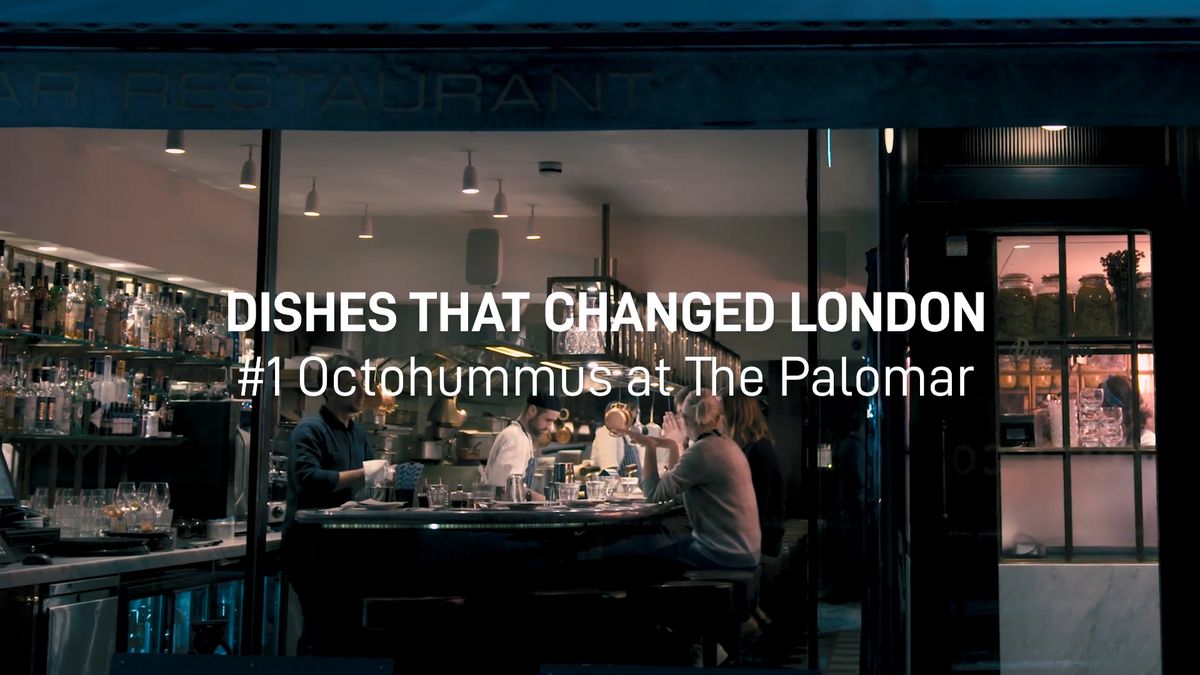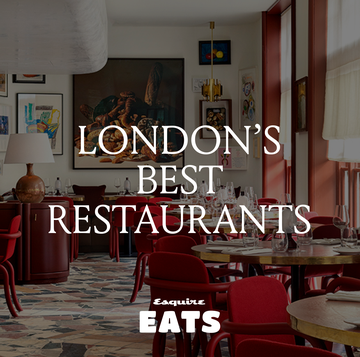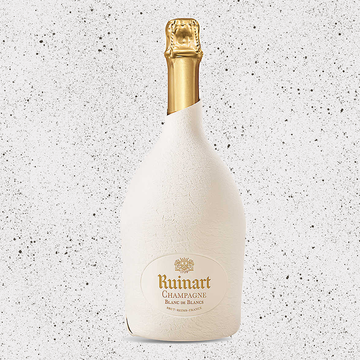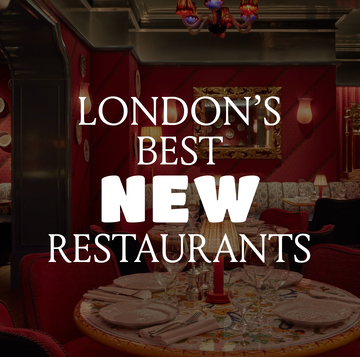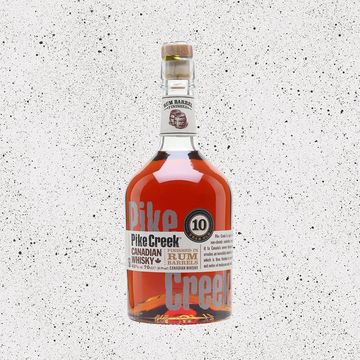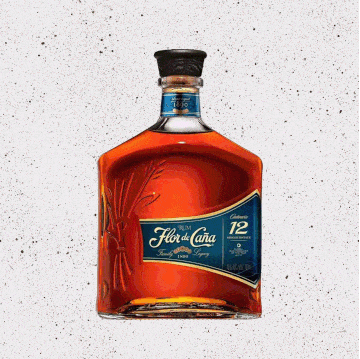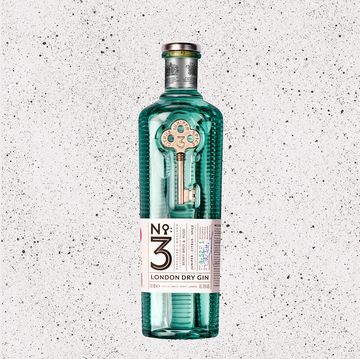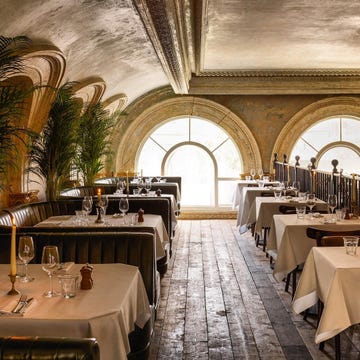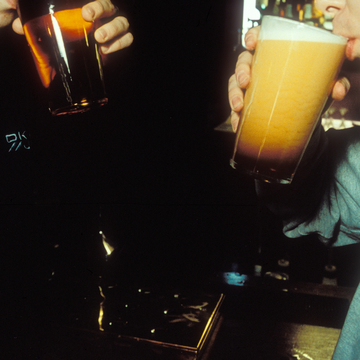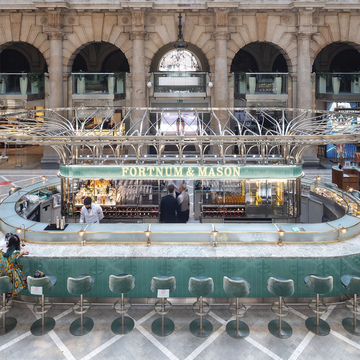It's mid-March in Stamford Hill, north-east London, and for the first time this year, the sun is shining with intent. Boats bob in the marina off the River Lea and the water glitters in the morning light. Outside the Riverside Café, alongside dog walkers and freelancers drinking espresso and eating scrambled eggs, John the Poacher sits in the shade by the door, a mug of tea tilting in his hand and his lurcher, Woody, stretched out on the hot concrete at his feet.
John, early forties, real name Jonathan Cook, spends his days foraging in east London for herbs and salad leaves, fruits and flowers, or fishing, or hunting for wood pigeon and rabbit, before trading his spoils with local pubs, restaurants and food companies for meals and pints of dark beer. Though man spent millennia living off the land, John's life is now at odds with the globalised society, but at one with an epicurean in-crowd.
When I first heard about John the Poacher — he's not really a poacher, it's a nickname that stuck — I had visions of a wild man in the city, a pariah living off the land charging exorbitant prices to none-the-wiser restaurants for ingredients that grow wild and free in nearby parks and hedgerows. His existence seemed to say something about the frenzied need for marketable narratives at restaurants of a certain persuasion — "You may know where your pork chops were bred, but we can show you the pavement crack where your salad leaves grew, and name the guy who picked them!" — and also, on a less cynical tack, to our need for a connection to the real world, to things that live, breathe, and grow, as our emotional lives and experiences become increasingly virtual. Luckily, there's nothing like a meditative tramp through east London to consider such things. John agrees to let me join him on a typical day.
The loose plan is to collect gorse flower and violets for Square Root London, a soft drinks manufacturer in Hackney, and then head to nearby Mason & Company, a craft beer bar and restaurant, to deliver sage and rosemary John has picked from a garden, with permission. First, we head to John's house, a Victorian terrace he shares with his mother, to drop off Woody; this evening they are going to New House Farm in Hertfordshire to hunt rabbits and Woody needs to be at full strength. John catches the rabbits with a ferret and nets in the day, or shoots them by torchlight at night. When he's done, he'll sleep in a horsebox before heading back into town.
"Rabbits are hard to get hold of these days, butchers don't have them hanging outside like they used to," he tells me. "I can't kill enough."
As we set off, John points out numerous bountiful trees and bushes, such as japonica quince and a flowering currant that's great for making syrup. A tree in the front garden of a block of flats has plums so succulent, he warns, the juice will erupt from your mouth if you aren't careful. John estimates people in the UK know "maybe one per cent" of the edible plants and flowers growing around them.
John isn't the only forager plying his trade in the city. Last year, John Rensten published The Edible City: a Year of Wild Food, an impassioned guide to what can be found in the urban environment. In it he espouses the nutritional virtues of unloved local flora, stating that rose hips have 20 times the vitamin C of oranges, hazelnuts have five times the protein of eggs and a teaspoon of ribwort plantain has as much fibre as a bowl of porridge. By those numbers, we should be grabbing all we can from neighbourhood bushes.
Leaving Woody, we cross into Walthamstow Marshes and follow a path that takes us up against the perimeter of the Leyton Industrial Village. John points out a vast blackberry bush, and a patch of wild hops he has harvested in the past for a local brewery. We stop at the rise of a ditch, opposite an estate and underneath the spidery hulk of a pylon, as John sets his eyes to the ground. Within seconds he is paring a chunk of horseradish the size of a bouncer's thumb. He slices me a sliver to taste, which I do, trying to put thoughts of the ditch's possible history out of my mind.
John has been hunting and foraging in Hackney for over three decades, ever since he and his family moved here when he was seven. A trained chef and gardener, John has held many jobs, but supplying small local businesses with foraged ingredients has been his meat and drink since he first got lavender for a brewer friend to use in one of his beers. Since then, his client base has grown. Among many other small food and drink businesses in east London, he picks blossom for the 58 Gin distillery, mushrooms for the Riverside Café and burdock for Pressure Drop brewery.
UK law states that it is legal to forage at levels of personal consumption, but it is illegal to do it for financial gain. John doesn't sell what he forages, but if a meal at one of the restaurants lands in front of him, or a few pints line up on the bar, then he won't turn them down. He also picks tiny amounts of abundant things in a sustainable, responsible way, plucking mushrooms from the centre of the patch, for example, so that it continues to grow outward.
Before we leave Walthamstow Marshes, we stop to pet the horses at Lee Valley Riding Centre, and rummage in a scrubby looking hedgerow for a salad leaf called Jack-by-the-hedge, as well as chervil. John points out cow parsley, which is fine to eat, provided it's not hemlock. Hemlock attacks the nervous system and kills you. I start to notice that the horseradish has left a sting in my throat, and experience a low-level panic that I have been poisoned by pesticide or dog urine. Then I remember that this is exactly what horseradish is supposed to do.
I ask John what's so great about food grown in the wild. "Flavour," he answers. "Cook a wild field mushroom and a supermarket white mushroom the same way and see which is better. The supermarkets grow theirs in compost, mine grow where they want." He tells me about a woman he knows who buys apples from a local supermarket, despite having a Golden Delicious tree in her garden. "I prefer the supermarket apples because I know where they've come from," she told him.
Foraged ingredients on a high-end menu are nothing new. René Redzepi at Noma in Copenhagen and Magnus Nilsson of Fäviken in rural Sweden made seasonality and locally sourced ingredients de rigueur a few years ago, and now many Michelin-starred menus feature elements that are unfamiliar, native and free. Chef Tommy Banks, who runs the remote Yorkshire restaurant The Black Swan at Oldstead, cooks with meadowsweet, sweet woodruff, wild garlic, spruce, all from nearby hedgerows. "Foraging as a fashion in London restaurants will come and go," Banks says, "but the ingredients, like meadowsweet and woodruff, won't. They've been discovered and people want to cook with them."
John and I cross the river again into Hackney Marshes, then to the Kingsmead Estate to pick violets. When we have collected a few handfuls, we strike out for Square Root London, stopping off for a beer at The Cock Tavern on Mare Street on the way. The pub is empty, and I see a chance to ask John about his feudal lifestyle. But every question — about his sporadic income, his existence outside the "system", his lack of desire for a regular career — is met with polite confusion. John's way of life is not in line with what society deems as normal, but in his mind, we are the odd ones.
"You lot go out and do a job, save your money or go on holiday, or save for retirement," he says, "whereas I think of my life as one big holiday. It seems odd to everybody, but I enjoy every single day." We down our dregs and head back out.
Square Root London has a small factory beneath the tracks of the London Overground train line near Hackney Downs station. I ask its co-founder Ed Taylor why he uses the ingredients John drops off from time to time.
"We are in business because we're selling a really nice lemonade that you can't make at home," he explains, "but if we can then also do super-micro-batch stuff, then it keeps people interested. Doing this is really fun." Ed will use the violets and gorse flower in a mini collection of sodas that will mimic the taste of old sweets, including Parma Violets.
I drink a bottle of Square Root lemonade, agreeing that it is indeed a really nice lemonade. In another arch a few hundred yards along the track we stop in at 58 Gin, a small-batch distillery. We get a quick tour and I sample the chocolate negroni, which features cocoa from Land Chocolate, a chocolatier in Bethnal Green. John put the two businesses in touch.
"I really think John is a lynchpin for a lot of what's happening in the east London food scene," says Rosie Birkett, a food writer and cook and one of John's regular clients, who last year published East London Food, a compendium of profiles, recipes and restaurant tips (John is in there; he is proud that his profile is the biggest). "What's interesting is that he occupies a singular space in which he straddles the old and new of east London. He cares for people in the community, and helps people who aren't part of the young, affluent, hip influx. And yet he has also found a way to come into the 'new' and embrace it. But it's not for himself. He wants to connect people and enable things, he wants to elevate and celebrate what's going on here."
"It's normal to me," John explains. "My ethos is just to get by, really. That's all I do. I try to help as many people out that I can. I don't make a lot doing what I do, the people I work with are the ones making the money. I just like sitting in the pub having a beer."
We leave 58 Gin, wend through Clapton and bumble along the river toward the Olympic Park at Hackney Wick and Mason & Company where we sit at a long communal table as the low sun streams in. I ask him about his worldview of foraging, and how Hackney has changed in the last 30 or so years. I ask him if he ever goes to the cinema, why he doesn't move to the countryside, and why he doesn't start his own venture, rather than forever assisting others with theirs. He answers by telling me about the astonishing quality of the beef from New House Farm and an especially good spot to find wild crayfish in Limehouse.
I guess I am trying to catch him out. I want him to say that he planned on being a lawyer but it never worked out, or that he'll be opening his own pop-up juice bar in Dalston this summer, or that his previously unmentioned food blog is gaining traction and he'll be publishing a book with Jamie Oliver by Christmas. But John is doing none of those things.
John seems an unusual being: a man who lives day-to-day, who has a humble but rewarding existence, and assists others where he can. In John's eyes, "Hackney is the centre of the world at the moment" but, even if it wasn't, one suspects he would still be out on the marsh, or up on the farm, or on the riverbank, still turning up at the pub with rabbits and bags of curious herbs. Still finding the things we didn't know we wanted until they were placed in front of us.

